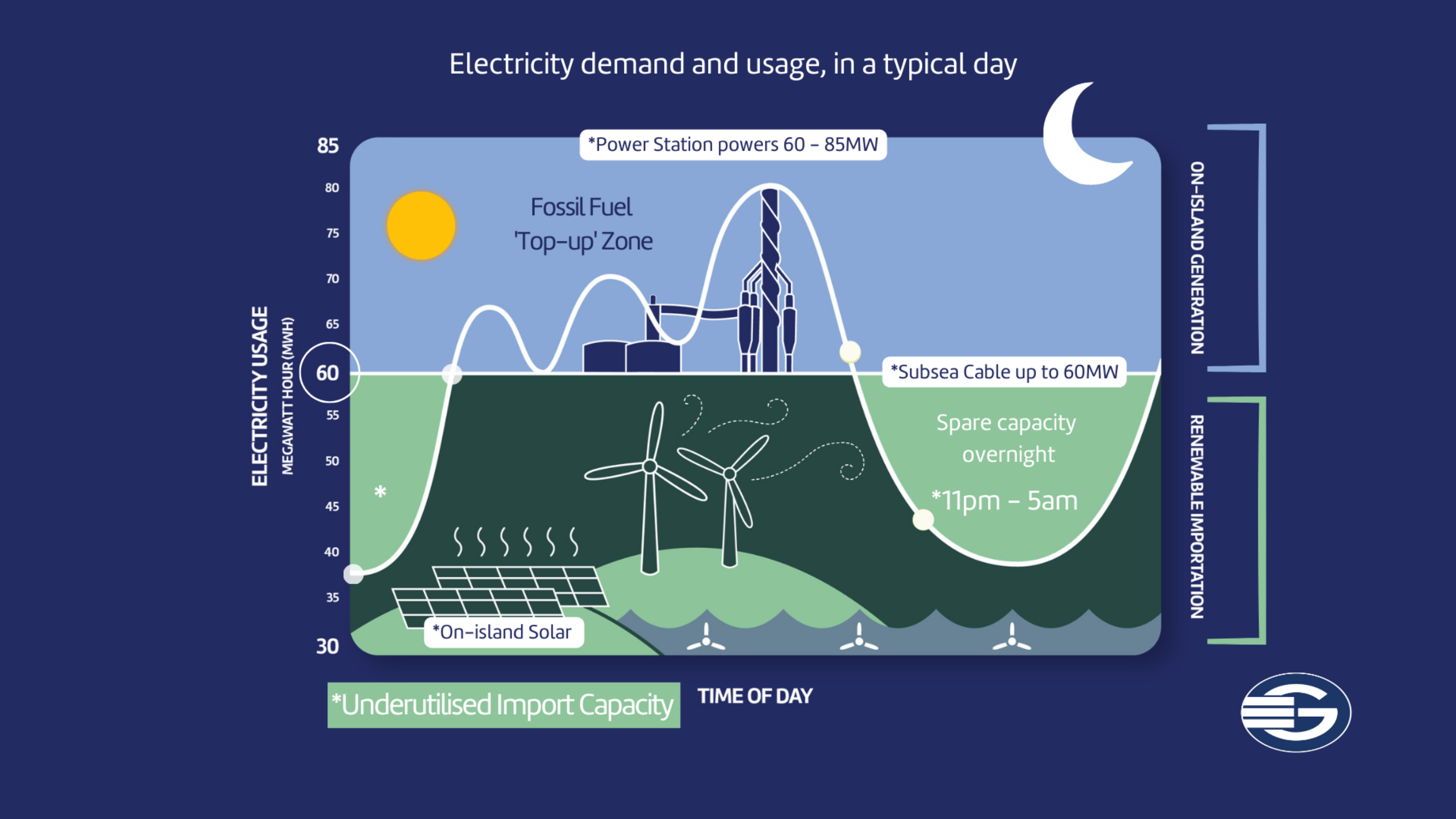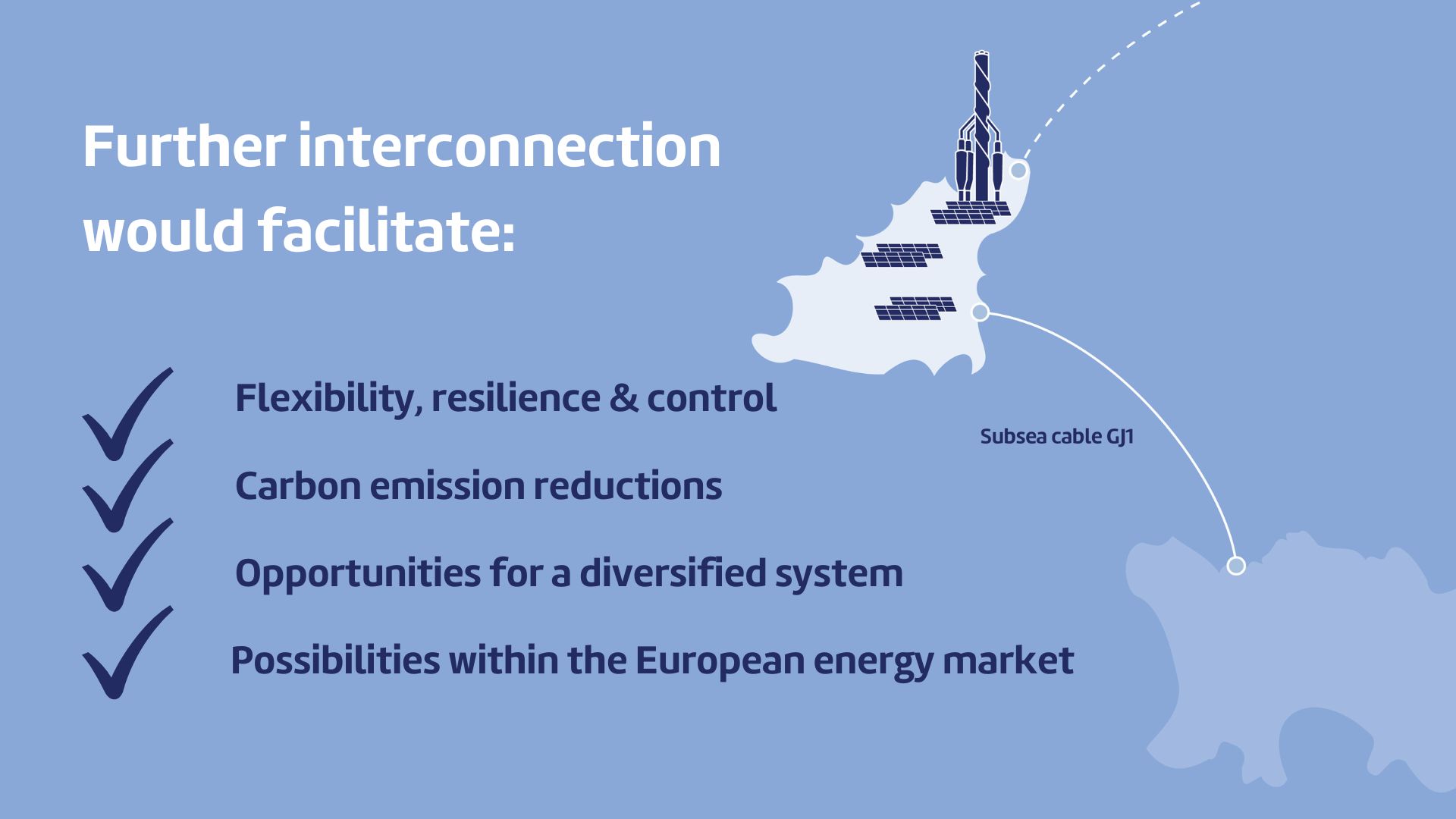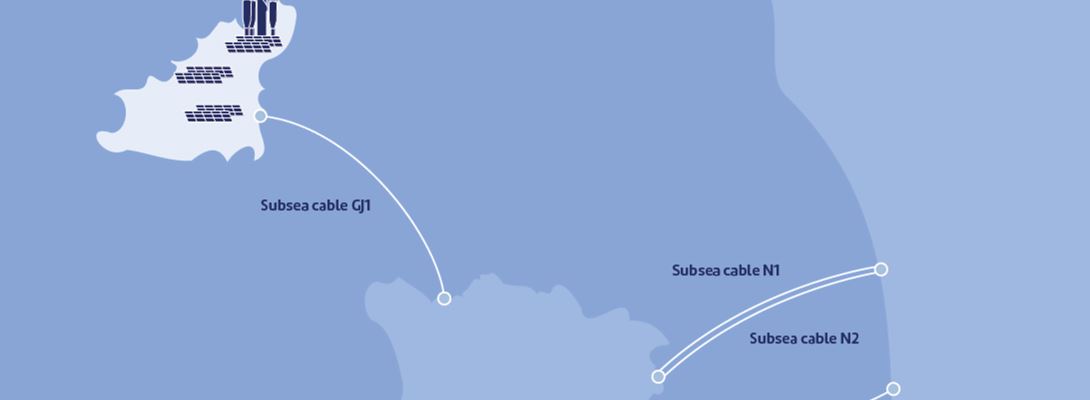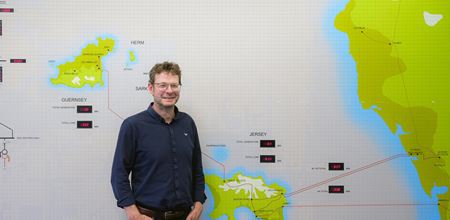For nearly all the night and a lot of the day, we benefit from renewably sourced imported electricity, which comes through the subsea cable. Over 90% of our total electricity used on island comes from renewably imported sources.
But, during peak usage times, like around dinner when everyone is home, the cable cannot supply enough energy to power all this activity, so when it comes to times of high usage, it's the power station that supplies the top-up, so we can secure a stable supply of electricity to everyone, when they need it.
Electricity demand varies. And just as there are times when the cable can’t supply enough electricity to meet Guernsey’s demand, there are also times when we do not need the full amount of electricity that we could import through the cable, such as overnight (when less electricity is used).

The requirement to top-up is increasing as more and more islanders choose electricity to heat their homes and power their vehicles.
Therefore, we need to look at options that allow us to squeeze even more out of our existing subsea cable to minimise the need for using the power station. This would lower our environmental impact and help with reducing the costs.
To achieve this, we can use the un-tapped capacity available in the cable in a number of ways:
1) Shift more of our electricity consumption to the off-peak periods (overnight) and try to use less power in the peak periods (around tea-time).
2) Install devices in our homes that allow us to store energy for later use, meaning the grid gets used more when there is surplus capacity and less when it requires top up.
3) Using larger scale energy storage. Large system batteries can be charged overnight and then used in the daytime. This option requires investment in new equipment but has added benefit of reducing stress in areas of the network. We may be able to import more electricity and then store this electricity on Island for when we need it – through smaller scale “storage” such as electric vehicles.
A balance of all these approaches would help keep the electricity system running efficiently, meaning lower costs for consumers and helping Guernsey work towards environmental targets. Optimising our existing system in this way is a crucial step whilst we seek to secure new forms of low carbon electricity, through increased import capacity and local renewable energy, whilst also allowing the electrification of heat and transport to continue.
So why do we need a second subsea cable if we’re able to use the existing one more effectively?
A second cable not only meets the ever-increasing demand for electricity using low carbon sources, but it also provides significant resilience and security to our low carbon supplies. Furthermore, a resilient system is essential to enable large-scale local renewables such as solar PV and offshore wind to be accommodated.

Whilst there remains one cable link to Europe, Guernsey must retain lots of reserve capacity in the form of diesel generators. This is costly and incurs high emissions if required for extended periods. A second connection would mean fewer diesel generators are needed for back-up as the likelihood of both cable links being interrupted is statistically much lower than just one cable being out of service.
Better use of one cable and planning for the future with a second cable
The existing cable, GJ1, has been of significant benefit to the whole island for over 20 years. We can and will use this cable in an even better way. To complement this existing cable there is now a need for a second cable to provide more capacity and resilience to our low carbon electricity supply.










